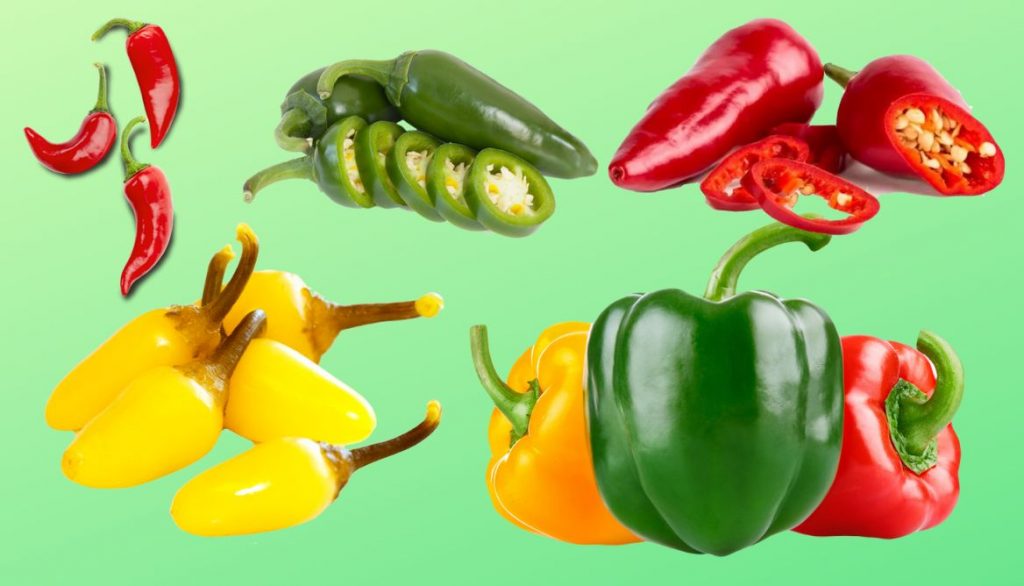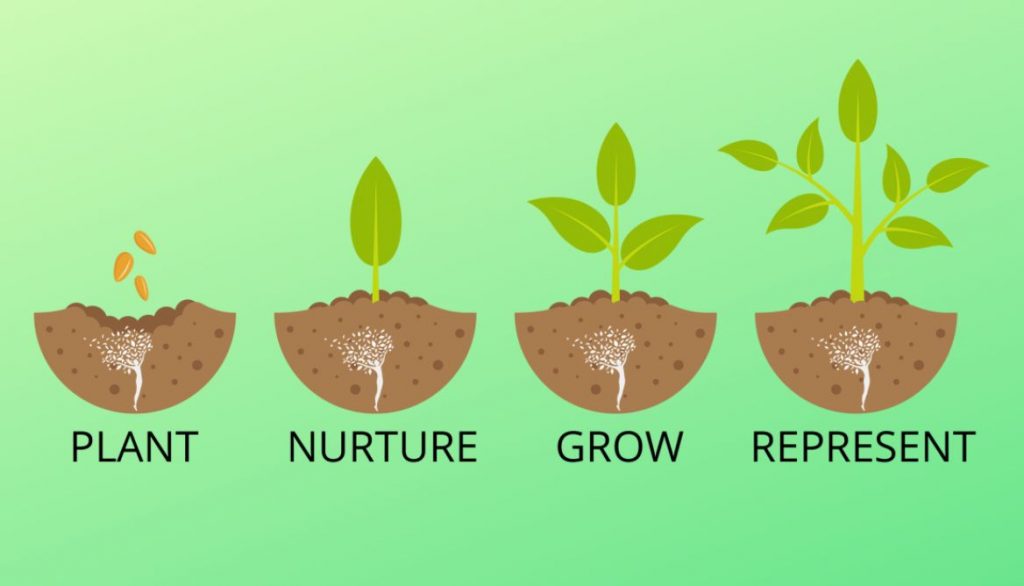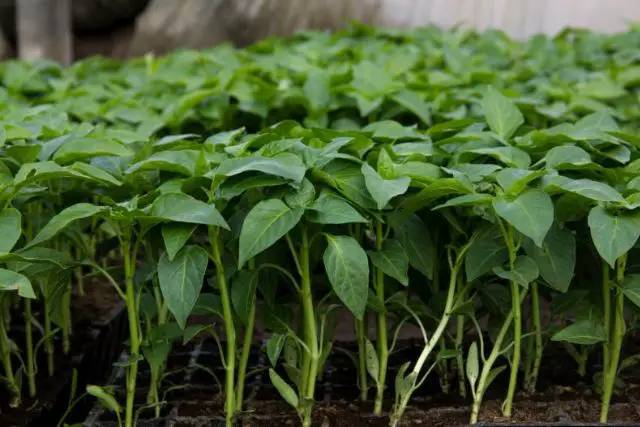Pepper plants are warm-weather crops that you can eat raw or cook before eating. If you’ve ever eaten a delicious hot pepper, you might wonder if you can simply grow peppers from seeds in your home. Well, you’re in luck.
Pepper plants are the easiest to grow, even from fresh seeds. In this article, we’ll work you through the process how to grow peppers from fresh seeds the right way to ensure healthy plants. We’ll also answer questions about the process that you might have, let’s dive in.
Contents
Can I Grow Peppers from Their Seeds?

There’ve been some misconceptions over the years about how growing peppers from seed will turn out. However, most are myths, as you don’t have to ferment pepper-like tomato seeds before planting them. Instead, you can take fresh seeds from the parent plant and either plant them in the soil or a potting mix.
The exciting part is that you can grow your favorite peppers from seeds, even if they’re store-bought peppers. However, you should only take your seed from ripe peppers because unripe peppers will only provide you with immature seeds with low germination rates.
Fortunately, letting your peppers ripen, on or off the plant, can help you ensure viable seeds. You can also plant the hot pepper seeds directly into the soil or a potting mix without drying them. Drying is only essential if you have plans for future plantings.
You can plant ripe pepper seeds like cayenne, red bell pepper, and others without fear of poor germination. However, note that planting them together will result in cross-pollination. Therefore, you might not get the pepper you’re looking for but hybrid plants.
How to Grow Peppers from Fresh Seeds Step By Step

Growing any pepper variety is easy once you know the steps you need to take. This section will explain the steps to growing pepper from fresh seed. On that note, let’s begin.
Materials
When growing peppers plants from fresh, quality seeds, you don’t need a lot of expensive materials. However, a few things are necessary, and you’ll probably already have them lying around the house.
First, you’ll need water and your quality seeds and water. Then you need a seedling flat that comes with a lid. It’s also essential to have available peat pellets or seed-starting soil. You’ll also need latex gloves if you are planting seeds from hot peppers like habanero seeds. Heat mats are optional but could eventually come in handy.
Get Some of Your Favorite Peppers
Now that your materials are ready, select the parent plant you would like to harvest seeds from. For example, if chili pepper species are your favorite, you should get seeds from chili pepper. On the other hand, some people prefer jalapeno seeds or habanero seeds. As long as they are mature seeds, you can use them.
If you want to grow more than a single pepper variety, like a mix of ghost peppers and habanero seeds, you might end up with hybrid peppers. Additionally, pepper seeds from cross-pollinated plants will bear the features of both parent plants if you’re using such. Finally, grocery store pepper seeds tend to produce hybrid peppers.
This means you should note that the seeds might grow and bear peppers that are different from what you planted. However, if you grow an heirloom variety from one pepper plant, the seed will produce the same.
Harvesting the Seeds
Now that your favorite peppers are ready, cut the top of the original plant off and scoop out the pepper seeds with a spoon. To ensure quality seeds, remove debris from the seed and spread them out in a single layer on a paper towel. You can also use seed trays if you have them.
Preparing the Seeds for Planting or Storage
Now, place the paper towel with the seed layer on paper plates. Place the seeds in a warm place and away from direct sunlight. Let the bell pepper seeds dry out for a few days before you use them. It could take 7-10 days for your seeds to be dry enough to store away.
Storing the Seeds
Once you have dry chili seeds, store them in a paper envelope and ensure you label them to make them easy to identify. Then, store the envelope away in a safe, dry location till spring comes and it’s time for planting. A rule of thumb is to avoid airtight containers when storing your seeds.
Preparing Soil
When it’s time to plant, fill the peat pot with seed-starting mix. Ensure you warm the soil up to 80 degrees Fahrenheit. To achieve this, you can place a grow light or a heat lamp close to the soil.
Planting the Seeds
Now that the soil is ready plant your seeds and cover the pot with a plastic dome or a plastic bag. Keep the pot from direct sunlight to maintain seed viability. The ideal conditions are essential when growing bell peppers from fresh seeds. Ensure you inspect the soil daily to ensure it doesn’t get completely dry.
To maintain the soil moisture, you should water it. However, avoid excess water as it could cause mold growth. Additionally, ensure the pot has plenty of drainages that allow the extra water to drain out of the soil.
Growing
Maintain an 80-degree Fahrenheit temperature because a warm temperature is vital at this point. Next, provide your potted seeds with light from a grow light for up to 16 hours per day. Then, turn the light off at night while ensuring the nighttime temperature doesn’t drop below 60 degrees Fahrenheit. Repeat this heat and light condition till its germination time, and your seeds germinate and produce true leaves.
Now, thin the bell pepper seedlings to a healthy seedling for each pot once the first set of true leaves grows. At this growth stage, you now have healthy, outdoor-ready plants. Therefore, you can now transplant your pepper seedlings from the seed pod outdoors once every chance of frost passes. Ensure the soil temperature requirement of above 50 degrees Fahrenheit is met. Space your pepper plants 12 to 18 inches apart when planting outdoors.
Harvesting Your Peppers
Your plants can take a very long time to mature; it all depends on the mature peppers you use. Sometimes, habanero pepper seeds can take up to 100-150 days. Bell pepper seeds take lesser time to grow. However, you should always wait 4-5 months for your current plant to produce peppers you can harvest.
With the ideal conditions, you can have your peppers ready in a much lesser time. Therefore, provide your pepper leaves with plenty of heat and sun if you’re hoping for the best result. You should also avoid excess moisture as it will only result in soggy soil, which could affect your pepper growth.
Depending on the open-pollinated varieties, green peppers take the longest time to mature and are mostly better. It’s hard to tell which variety you’d get from grocery store pepper seeds as they’re primarily hybrid seeds. Chili seeds also don’t take up to 100 days to germinate. Habanero pepper seeds take up to 100 days or more to germinate.
Use scissors or a knife tray to separate the fruit and harvest the bell pepper. Trying to use your hand might result in damage to the plant. Ensure you always leave an inch of the stem after cutting out the fruits.
Frequently Asked Questions
What are the easiest peppers to grow?
If you want a shorter germination time, you should opt for a capsicum Annuum. This means jalapeno seeds, cayennes, and even serrano peppers. Additionally, they thrive better in cool temperatures and germinate easily in low-temperature conditions.
How long does it take for the seeds to sprout?
Most pepper seeds tend to sprout in a week once you provide them with a temperature of 70-80 degrees Fahrenheit. However, your generation can be spotty depending on the variety. Hot varieties take longer to sprout and could take up to 6 weeks.
Where do I get seeds?
You can get seeds from the local garden center or online seed companies. You can also get grocery store pepper seeds if you want. They’re good to go as long as they’re mature seeds.
I have my seeds, now what?
Now you can start prepping your seeds. You can opt to soak them in warm water the night before planting, but it isn’t necessary. Then you can plant your dry, mature seeds following the above steps.
What kind of potting soil or potting mix do I use?
First, you must know the difference between garden soil and potting mix. Although both are seed starter soil, you can only use potting mix in containers. This is because it contains top ingredients like bark and peat moss that ensure good airflow and drainage and strong roots in containers.
Do I need Soil Boosters?
You don’t need a soil booster for your pepper plants to grow. However, you can choose to add them to the seed pods after planting the seeds and consistently each week till the first set of true leaves grows.
What is hardening off, and when do I start?
We grow our pepper seeds in an indoor climate with no regulated hours of sunlight, no wind, or cold nights. Therefore, hardening off is the process of gently preparing your young plant for life in the outdoors. This could take some weeks, so start some weeks before you move them outdoors. It isn’t a strict schedule; it simply involves getting the pepper plant outdoors for longer periods each day. However, keep a close eye on the growing plants as intense heat could cause them to wilt.
Conclusion
When it comes to growing pepper from fresh seeds, some people think it’s difficult to grow, and that’s true. However, knowing the proper steps to take will make it much easier for you. This guide covers the best methods and planting instructions to simplify the process. Growing peppers from fresh seeds require patience. But with time and care, it will reward you with amazing and healthy fruits.
- How to Get Potatoes to Sprout Eyes: Detailed Growing Guide with 3 Options - July 31, 2023
- Weight of a Medium Potato: Revealed in Detailed Guide - July 29, 2023
- Maris Piper Potatoes: 9 Substitutes You Should Know About - July 27, 2023
Hello! I’m Jessica Zander, a garden coach and consultant based in the Boston area (zone 6b), offering virtual consultations across the country and Canada.
I’ve been passionate about gardening since the early 1990s, and in 2022, I launched You Can Do It Gardening to empower individuals to feel more confident in their gardening endeavors.
Following a 30-year career in nonprofit finance and operations, I transitioned out of that field in mid-June of 2023 due to the growing demand for coaching services. Interestingly, my years of presenting financial statements to boards and finance committees proved to be valuable experience for teaching people about gardening! I enjoy sharing skills, providing guidance and suggestions, and collaborating efficiently with clients to make significant improvements to their outdoor spaces, both small and large. I also regularly teach at the Arlington Continuing Education and Cambridge Adult Education.
My approach is direct and practical, akin to Mary Poppins, but tailored to your garden. Clients find satisfaction in saving money and taking pride in their own gardening achievements.



Add comment